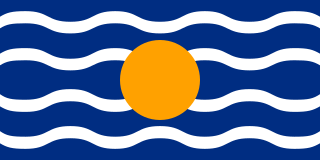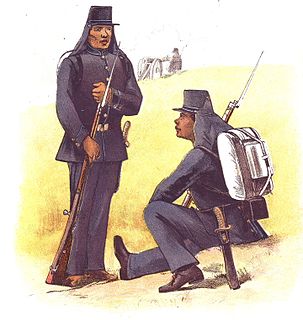
The Lesser Antilles is a group of islands in the Caribbean Sea. Most form a long, partly volcanic island arc between the Greater Antilles to the north-west and the continent of South America. The islands form the eastern boundary of the Caribbean Sea with the Atlantic Ocean. Together, the Lesser Antilles and the Greater Antilles compose the Antilles. When combined with the Lucayan Archipelago, all three are known as the West Indies.

The West Indies Federation, also known as the West Indies, the Federation of the West Indies or the West Indian Federation, was a short-lived political union that existed from 3 January 1958 to 31 May 1962. Various islands in the Caribbean that were colonies of the United Kingdom, including Trinidad and Tobago, Barbados, Jamaica, and those on the Leeward and Windward Islands, came together to form the Federation, with its capital in Port of Spain, Trinidad and Tobago. The expressed intention of the Federation was to create a political unit that would become independent from Britain as a single state—possibly similar to the Canadian Confederation, Australian Commonwealth, or Central African Federation; however, before that could happen, the Federation collapsed due to internal political conflicts over how the Federation itself would be governed or how it would viably function. The territories that would have become part of the Federation eventually became the nine contemporary sovereign states of Antigua and Barbuda, Barbados, Dominica, Grenada, Jamaica, Saint Kitts and Nevis, Saint Lucia, Saint Vincent and the Grenadines, and Trinidad and Tobago; with Anguilla, Montserrat, the Cayman Islands, and Turks and Caicos Islands becoming British overseas territories. British Guiana (Guyana) and British Honduras (Belize) held observer status within the West Indies Federation.

The Virginia Capes are the two capes, Cape Charles to the north and Cape Henry to the south, that define the entrance to Chesapeake Bay on the eastern coast of North America.

Demerara is a historical region in the Guianas on the north coast of South America which is now part of the country of Guyana. It was a Dutch colony until 1815 and a county of British Guiana from 1838 to 1966. It was located about the lower courses of the Demerara River, and its main town was Georgetown.
Dick Rathmann was an American racecar driver.
Sam Hanks was an American racecar driver who won the 1957 Indianapolis 500. He was a barnstormer, and raced midget and Championship cars.
The Danish West India Company or Danish West India–Guinea Company was a Dano-Norwegian chartered company that exploited colonies in the Danish West Indies.

Joan Maetsuycker was the Governor of Zeylan during the Dutch period in Ceylon and Governor-General of the Dutch East Indies from 1653 to 1678. He was appointed as Governor of Zeylan on 24 March 1646 and was governor until 26 February 1650. He was succeeded by Jacob van Kittensteyn.

Commonwealth Caribbean is a term used to refer to the English-speaking nations and territories of the Caribbean, which once constituted the Caribbean portion of the British Empire and are now part of the Commonwealth of Nations. The term includes many independent island nations, British overseas territories and nations on the mainland. The emphasis on the English language has led other terms to also describe the grouping, such as the Anglo Caribbean, Anglophone Caribbean or English-speaking Caribbean. The term is now used in preference over the older term "British West Indies" which was used to describe the British colonies in the West Indies (therefore not including Belize and Guyana) during decolonisation and following independence from the United Kingdom. The term Anglo Caribbean or the British Commonwealth Caribbean, traditionally becomes the preferred sub-regional term as a replacement to British West Indies.

The West Indies cricket team, nicknamed the Windies, is a multi-national men's cricket team representing the mainly English-speaking nations and territories in the Caribbean region and administered by Cricket West Indies. The players on this composite team are selected from a chain of fifteen Caribbean territories, which are parts of several different countries and dependencies. As of 10 March 2020, the West Indies cricket team is ranked eighth in the world in Tests, ninth in One-Day Internationals (ODIs) and ninth in Twenty20 Internationals (T20Is) in the official International Cricket Council (ICC) rankings.

The West Indies is a region of the North Atlantic Ocean and the Caribbean that includes the island countries and surrounding waters of three major archipelagos: the Greater Antilles, the Lesser Antilles, and the Lucayan Archipelago.

Garnish, a town located on the west coast of the Burin Peninsula, was well known for its lumbering and now for its lobstering operations. Located on Route 213, it is 25 km along route 220 north west of Grand Bank and 18 km along Route 220 east of Marystown. The Way Office was established in 1852 and the first Waymaster was Henry Campe. Other notable people include Mayor Gregory Day and Brian Marshall. 2006 the town had a population of 578.

The Spanish West Indies or the Spanish Antilles was the collective name for Spanish colonies in the Caribbean. In terms of governance of the Spanish Empire, The Indies was the designation for all its overseas territories and was overseen by the Council of the Indies, founded in 1524 and based in Spain. When the crown established the Viceroyalty of New Spain in 1535, the islands of the Caribbean came under its jurisdiction.

A Residency was a subdivision of

Belanda Hitam were a group of African recruits in the Royal Netherlands East Indies Army during the colonial period.
In 1781, Great Britain declared war on the Dutch Republic, opening the Fourth Anglo-Dutch War. As part of its offensive strategy, the British organized an expedition against Dutch colonial outposts on the Gold Coast of Africa. Captain Thomas Shirley led the expedition, commanding HMS Leander and several transports carrying two small regiments of independently raised troops under the command of Captain Kenneth Mackenzie of the 78th Foot.
The sponge oyster, Cryptostrea permollis, is a species of bivalve mollusc in the family Ostreidae. It can be found along the Atlantic Coast of North America, ranging from North Carolina to the West Indies.

The Danish slave trade occurred separately in two different periods: the trade in European slaves during the Viking Age, from the 8th to 10th century; and the Danish role in selling African slaves during the Atlantic slave trade, from the 1600s until a 1792 law to abolish the trade came into effect on 1 January 1803. Slavery continued in the Danish West Indies until July, 1848, when all unfree people in Danish lands were emancipated.

West Indiaman was a general name for any merchantman sailing ship making runs from the Old World to the West Indies and the east coast of the Americas These ships were generally strong ocean-going ships capable of handling storms in the Atlantic Ocean. The term was used to refer to vessels belonging to the Danish, Dutch, English, and French West India companies.













